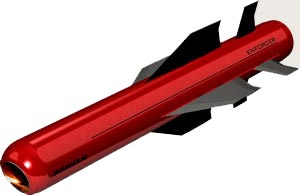Above: Eryx anti-tank wire-guided weapon system is in use with the French Army and Special Forces. Photo: MBDA
New Guided Missiles, Programmable Munitions Enhancing The Infantry Precision Fire Effects
Today, western armies are equipping their dismounted infantry with light anti-tank weaponry. These compact, short range missiles are designed to be effective at ranges of about 600 meters, and are fired safely from enclosure.
One such weapon is the French ERYX which also uses command-to-line-of-sight wire guidance to deliver effective firepower at ranges of 50 – 600 meters. The short flight time minimizes the limitations inherent to this method of guidance at longer ranges since the enemy has less time to react.

Modern miniaturized electro-mechanic systems (MEMS), low-cost inertial measurement units (IMU) and powerful optronics embedded on microchips enable missile designers to include ‘fire and forget’ guidance in modern missiles, packing sufficient accuracy and lethality to almost double the effective range of shoulder fired, unguided anti-tank weapons. Several future weapons employing these techniques are currently in development – the Spike SR from Rafael, and a new ‘concept weapon’ called ‘Enforcer’ from MBDA.
Two weapons in this category are the U.S. Predator and Swedish RB57 the later employs ‘Predicted Line of Sight’ (PLOS) guidance method using on-board IMU, to fly the missile at a straight line to the designated point – aiming directly at the target on direct attack or slightly above it – for top attack. In the PLOS mode, the gunner tracks the target for about 3 seconds, training the missile’s guidance electronics to compute the target’s angular speed. After launch the missile flies autonomously to the target adjusting the necessary corrections according to the data acquired by the tracking.

















